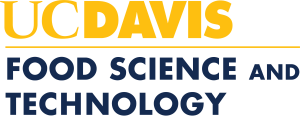COURSE GOALS: Food Science 123 is designed to give students an understanding of the physical, chemical and kinetic properties of enzymes. Purification, characterization and quantitative evaluation of the influence of parameters such as concentrations of substrate and enzyme, pH, temperature and inhibitors on activity are stressed. Specificity and mechanism of action of enzymes are described by considering examples selected from among enzymes of importance to food science, nutrition, and to the biological sciences.
ENTRY LEVEL: BIS 102 and 103
COURSE FORMAT: The course is presented in two 1 1/2 hour lectures per week. Discussion sessions are available if requested. Grading is based on two midterms - 100 points each, final - 200 points, and several problem sets. Examination questions are predominantly essay and problems. All past examination questions are available for study in Food Science Library and Main Library. Grading on absolute percentage, not curve.
TOPICAL OUTLINE: Approximate number of 1 1/2 hour lectures in parenthesis:
- Introduction, historical highlights (1)
- Enzymes as proteins; their structure (1)
- Methods of purification (3)
- Substrate and enzyme concentration relationships (2)
- Midterm (1)
- pH effects (2)
- Temperature effects (1)
- Inhibitors of enzymes, their importance (1)
- Nature and role of cofactors (1)
- Classification of enzymes (1)
- Midterm (1)
- Hydrolytic enzymes - importance, properties and mechanism of action of selected enzymes (2)
- Oxidative enzymes - importance, properties and mechanism of action of selected enzymes (2)
- Completion of course: analysis of course; questions (1)
- Final
